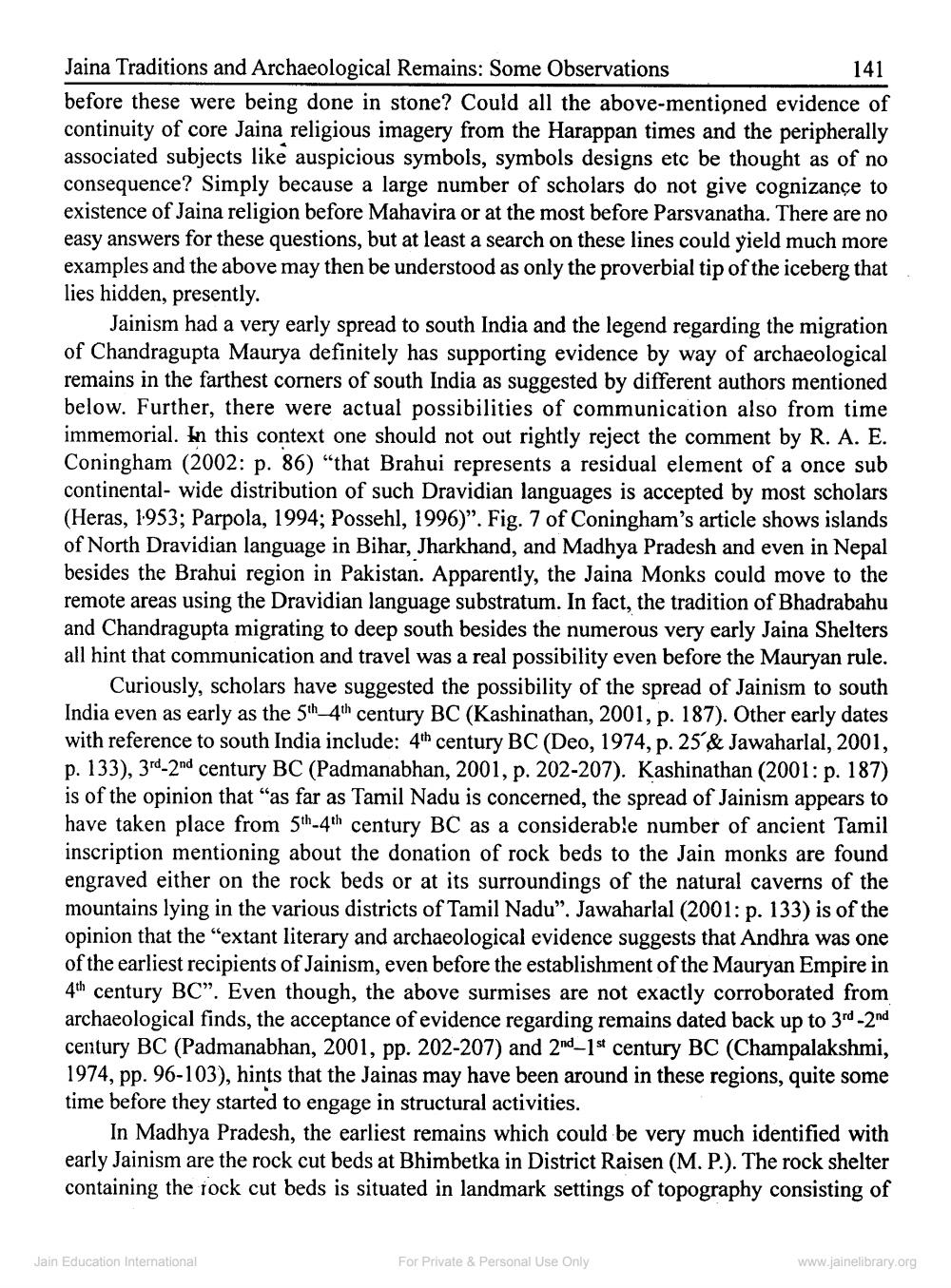________________
141
Jaina Traditions and Archaeological Remains: Some Observations before these were being done in stone? Could all the above-mentioned evidence of continuity of core Jaina religious imagery from the Harappan times and the peripherally associated subjects like auspicious symbols, symbols designs etc be thought as of n consequence? Simply because a large number of scholars do not give cognizance to existence of Jaina religion before Mahavira or at the most before Parsvanatha. There are no easy answers for these questions, but at least a search on these lines could yield much more examples and the above may then be understood as only the proverbial tip of the iceberg that lies hidden, presently.
Jainism had a very early spread to south India and the legend regarding the migration of Chandragupta Maurya definitely has supporting evidence by way of archaeological remains in the farthest corners of south India as suggested by different authors mentioned below. Further, there were actual possibilities of communication also from time immemorial. In this context one should not out rightly reject the comment by R. A. E. Coningham (2002: p. 86) “that Brahui represents a residual element of a once sub continental- wide distribution of such Dravidian languages is accepted by most scholars (Heras, 1953; Parpola, 1994; Possehl, 1996)”. Fig. 7 of Coningham's article shows islands of North Dravidian language in Bihar, Jharkhand, and Madhya Pradesh and even in Nepal besides the Brahui region in Pakistan. Apparently, the Jaina Monks could move to the remote areas using the Dravidian language substratum. In fact, the tradition of Bhadrabahu and Chandragupta migrating to deep south besides the numerous very early Jaina Shelters all hint that communication and travel was a real possibility even before the Mauryan rule.
Curiously, scholars have suggested the possibility of the spread of Jainism to south India even as early as the 5th_4th century BC (Kashinathan, 2001, p. 187). Other early dates with reference to south India include: 4th century BC (Deo, 1974, p. 25'& Jawaharlal, 2001, p. 133), 3rd-2nd century BC (Padmanabhan, 2001, p. 202-207). Kashinathan (2001: p. 187) is of the opinion that “as far as Tamil Nadu is concerned, the spread of Jainism appears to have taken place from 5th-4th century BC as a considerable number of ancient Tamil inscription mentioning about the donation of rock beds to the Jain monks are found engraved either on the rock beds or at its surroundings of the natural caverns of the mountains lying in the various districts of Tamil Nadu”. Jawaharlal (2001: p. 133) is of the opinion that the “extant literary and archaeological evidence suggests that Andhra was one of the earliest recipients of Jainism, even before the establishment of the Mauryan Empire in 4th century BC". Even though, the above surmises are not exactly corroborated from archaeological finds, the acceptance of evidence regarding remains dated back up to 3rd -2nd century BC (Padmanabhan, 2001, pp. 202-207) and 2nd_1st century BC (Champalakshmi, 1974, pp. 96-103), hints that the Jainas may have been around in these regions, quite some time before they started to engage in structural activities.
In Madhya Pradesh, the earliest remains which could be very much identified with early Jainism are the rock cut beds at Bhimbetka in District Raisen (M.P.). The rock shelter containing the rock cut beds is situated in landmark settings of topography consisting of
Jain Education International
For Private & Personal Use Only
www.jainelibrary.org




